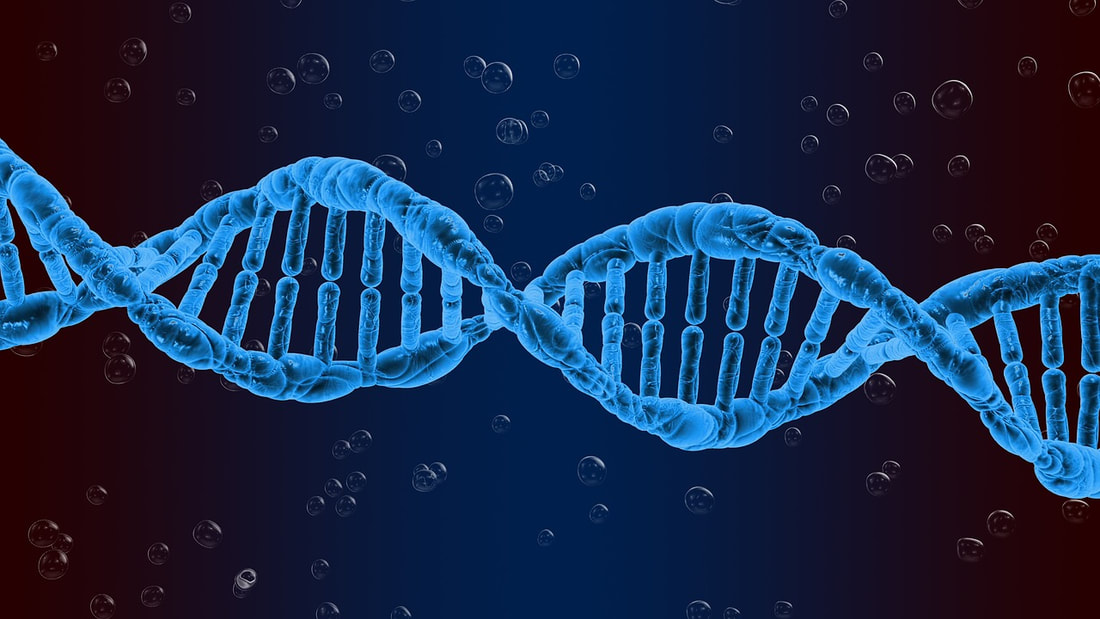|
By Jenna Everard The origin and evolution of life as we know it has long been a topic of debate within the scientific community. At the center of that puzzle lies deoxyribonucleic acid, or DNA — the molecule of inheritance that defines life, determining the structures, functions, and capabilities of various organisms. DNA is composed of four nitrogenous bases, Adenine (A), Thymine (T), Cytosine (C), and Guanine (G), all of which are attached to a molecular backbone of alternating deoxyribose sugars and phosphate groups. In order to form the notorious double helix structure of DNA, a structure that looks like a twisted ladder, hydrogen bonds form between the bases, joining the two backbones together. The rules for these bond formations are relatively strict: C always pairs with G and A always pairs with T. In this manner, the genetic code for life is formed, with different sequences of bases forming different genes that encode different proteins, which determine the various features and functions of living creatures. As the capabilities of genetic technologies grow, genetic engineering has become a popular approach used for the development of treatments for diseases such as cancer. Traditionally, genetic engineering involves the alteration of genes, such as inserting different ones, removing undesired ones, or changing their expression. While these methods all alter pre-existing DNA, new approaches have begun to explore creating novel genes by adding letters to the DNA alphabet. In 1962, Alexander Rich first proposed the idea of unnatural base pairs (UBPs), or bases of DNA synthesized in a lab. However, it was not until 2009 that Floyd Romesberg’s lab created the first UBP, labeled X and Y, that could be efficiently amplified and transcribed into proteins. In 2014, Romesberg co-founded Synthorx, a company that strives to use an expanded DNA alphabet made up of six bases rather than the traditional four to develop novel proteins, which they call Synthorins. With their proprietary semi-synthetic bacteria, they are capable of efficiently producing these proteins, and they aim to use them to provide better treatments for cancer and autoimmune disorders. Synthorx’s first product, THOR-707, has recently been approved for its first in-human clinical trials. It will be both the first Synthorin-based product designed and entered in clinics. THOR-707 is predicted to be an efficient tumor suppressor as it prevents the binding of certain signalling molecules, which increases the activity of cells linked with favorable cancer prognoses while decreasing the activity of cells that suppress immune responses. Other scientists have followed in Romesberg’s direction of creating UBPs, but not necessarily with the same goals in mind. Just last year, Dr. Steven Benner created an expanded DNA alphabet with 8 letters! In his alphabet, in addition to the normal base pairs, there are 4 UBP’s that form two additional base pairs. His new base pairs fit neatly among normal base pairs and can be easily read by enzymes to make RNA, the molecule that precedes protein formation. In addition to its potential use in diagnosing and treating diseases, Benner’s research to develop his “Hachimoji DNA” begins to hypothesize types of molecules that might sustain extraterrestrial life forms. Both Romesberg and Benner have achieved remarkable discoveries, expanding on what we have previously considered the fundamental code for life in order to explore possibilities of new lifeforms. Though there is a wide range of useful applications for their respective DNA alphabets, all seem to probe at the basic question: why did life evolve the way that it did? While many have assumed for centuries that a part of the explanation was that the four natural bases of DNA were the only ones that functioned properly in genes, Romesberg and Benner have shown that this is not the case. Their research reveals DNA could have had more bases, but doesn’t, and we are still wondering why.
0 Comments
Leave a Reply. |
Categories
All
Archives
April 2024
|

